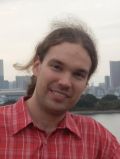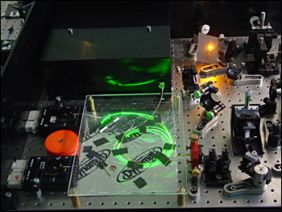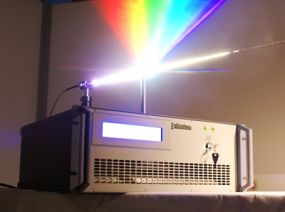 |
BMe Research Grant |

|
Doctoral School of Electrical Engineering
Department of Telecommunications and Media Informatics
Supervisors: Dr. Tibor Cinkler, Dr. Zoltán Várallyay
Mathematical modeling and experimental study of nonlinear optical devices in optical transmission systems
Introducing the research area
My research focuses on two kinds of nonlinear optical devices potentially used in today’s and future optical networks: saturable absorbers and periodically poled lithium niobate (PPLN) waveguides. The research involves the investigation of implementing these devices to function as light sources and signal regenerators and the understanding of the underlying physical mechanisms of their operation via experiments, calculations, mathematical modeling and computer simulation.
Brief introduction of the research place
I am doing my research at the Department of Telecommunications and Media Informatics, in close collaboration with domestic and foreign partners. Our group focuses mainly on mathematical modeling and computer simulations, but high quality experimental work is done as well with the Furukawa Electric Institute of Technology Ltd. and its foreign partners. Cooperating with the Japan based National Institute of Information and Communications Technology, our visiting researchers do related experimental work on a regular basis. We cooperate with the Photonic Network System Laboratory, which is of very high standard.
History and context of the research
My research involves two main areas. The first one is the investigation of physical processes in optical fiber based lasers (fiber lasers) utilizing saturable absorbers via computer simulation. These fiber lasers are used e. g. for telecommunication purposes [1]. Significance of such lasers lies within their applicability in wavelength ranges where bulk lasers perform at lower quality (e. g. erbium, ytterbium, neodymium fiber lasers).
|
a) |
b) |
Fig. 1. a) Realization of erbium-doped ultra-short pulsed fiber laser in a lab; b) commercial fiber laser with a wide spectra (for further details, please click on the figures)
The mode locking (the physical process needed for the ultra short pulse generation) of the ultra short (10-15 – 10-12s)
pulsed fiber lasers investigated today is mainly based on passive
nonlinear devices (the physical parameters of which changes as a function of the
light intensity), namely saturable absorbers [2]. Compared to
other methods of mode locking, this results in the generation of shorter
pulses and a more simple and stable build-up of the laser. Passively
mode-locked lasers are subjects of many experimental studies, however,
their theoretical investigation is also important in understanding the
joint effect of the physical processes and in forecasting the important
laser parameters [3]. Nonlinear
optical effects are important not only in case of pulsed lasers but for
continuous wave lasers as well, for which they can change beam and
spectral properties [4].
The
second main area is similar in terms of the underlying physical
background, but differs from the application aspect. This is the
experimental realization of all-optical regeneration of phase modulated
signals deteriorated by noise [5] and theoretical and experimental study
of ultra-low noise amplification [6], especially in the practically
important wavelength division multiplexed systems.
Fig. 2. Signal deteriorated by phase and amplitude noise and its regenerated form in the complex plane
In today’s optical transmission systems, the regeneration of the phase
modulated signals is executed in the electrical domain [7], converting
the optical signal to electrical ones and back. The all-optical phase
regeneration is executed solely in the optical domain, which is simpler,
cheaper and faster. We utilize PPLN crystals for the phase
regeneration, which has many advantages considering network
implementation [C1], and according to our previous studies [C1,C2], it is
also a promising device in low noise and low crosstalk amplification of
wavelength division multiplexed systems. In
case of ultra-short pulsed lasers, I investigate the effect of
saturable absorber parameter selection on laser operation by our own
mathematical model and by computer simulation [J1]. In our present
study we use a detailed mathematical model to understand the joint effect
of parameters and physical processes that has
not been studied together in the literature earlier – mainly the interaction of
absorber parameters and polarization stability of the laser. Another aim is to reveal the saturable absorber parameters needed for
achieving given pulse properties, a task that would be difficult to solve experimentally. In
case of continuous wave, high power lasers (with several hundreds of
Watts), the aim is to give a deeper understanding of the relationship
between optical nonlinearities and the laser line width, using the model.
We had the opportunity to validate the model
experimentally in each cases, and we paid high attention to it. When studying phase regeneration properties of PPLNs, my aim
is to show experimentally that all-optical phase regeneration can be
realized using PPLN nonlinear crystals, exploiting the second order nonlinearities of
the crystal. These processes are in analogy with the third order
processes in highly nonlinear fibers [5], also investigated in
the scope of phase regeneration, and they reduce the phase noise level
in case of appropriate settings. Finally,
by our mathematical model and further experimental studies, I
investigate the potential of ultra-low noise amplification in PPLNs for
multiple channels. My purpose is to show that it is possible to realize
multi-channel low noise amplification in PPLNs, with lower crosstalk
than with highly nonlinear fibers. This would allow amplification of wavelength division multiplexed systems at lower noise [6]. When
modeling fiber lasers, a primary consideration was to create a model
which handles the equations of optical nonlinearities and the laser
equations simultaneously, involving the occupancy of the energy levels
at each oscillator position, for both orthogonal polarization
components. In this way, it is possible to give a more detailed description
of the laser operation than most studies in the literature. Moreover,
instead of dealing with abstract model parameters, it enables setting of
properties - such as absorption and emission cross sections, doping concentration of the amplifier, core diameter of the fibers,
etc. - that can be applied in experimental setups directly, easing harmonization
between experimental and theoretical work. The
above model can be used for pulsed and continuous wave lasers as well.
The sketch of the model for pulsed lasers can be seen in Fig. 3.
Fig. 3. Sketch of the pulsed fiber laser model Stationary
operation of the pulsed lasers builds up from initial noise. Nonlinear
effects occurring in fibers and in saturable absorber
synchronize the modes (their spectral amplitude and phase), generating
ultra-short pulses. In case of
continuous wave lasers, description of laser spectrum broadening complicates modeling, as real lasers operate in a narrow wavelength domain, not at a
discrete wavelength. The inclusion of
this effect is necessary for the investigation of nonlinearities
inside the laser. According to previous theoretical studies, the
spectral broadening can be described by the temporal phase evolution of
the laser, driven by a stochastic Wiener process [8]. Experimental
realization of the signal regeneration is based on the principle of a
phase sensitive amplifier, which is shown in Fig. 4. The interaction
between the input pump and signal is assured by the joint effect of
different second order nonlinearities, called cascaded
nonlinearities. Their result is the generation of the idler in the first
PPLN, which is phase correlated to the input signal and pump. The phase
sensitive amplification in the second PPLN is also a result of the
cascaded nonlinearities. The amplifier is capable of removing phase
noise from binary phase shift keyed (BPSK) signals
(Fig. 2.). This phase noise was added at the “Phase manipulation” stage
in Fig. 4. The amplifier recognizes these noise components by their
phase, utilizing the phase stored in the idler, and weakens them, while
amplifying the noiseless parts of the signal.
Fig. 4. Phase sensitive amplifier and phase relationships The
signal regenerator to be realized by PPLNs is a so-called black-box
type device, which means that it clears the modulation from the
incoming signal, and use the recovered carrier wave for idler
generation. Consequently, it does not need an idler generated in
advance. Using this idler, modulated input signal can be amplified
phase-sensitively and its phase noise can be reduced. Put in context,
the amplifier shown in Fig. 4. can regenerate only a signal modulated after a given carrier wave and a generated idler. The
principle of phase sensitive amplifier can be applied to wavelength
division multiplexed systems to achieve low noise amplification. In
some cases we executed experimental investigations, then created a
general model that describes the interaction of each wavelength
channels, and solves the coupled differential equations of cascaded
nonlinearities. Using this model, we can calculate parasitic crosstalk
of each channel for an arbitrary number of cascaded amplifiers. Most of above mentioned goals have been achieved by now, namely: In
case of a special fiber laser designed for telecom applications, I
succeeded in determining the relationship between saturable absorber parameters
and stability [J1]. Stability is a critical parameter for most
applications. I determined the absorbent settings at which the laser
is insensitive to mechanical impacts [J1]. In Fig. 5, pulse energies and
widths are shown in such a stable state, as a function of another
absorber parameter. It can be observed that for a wide range of
polarization (different curves) these amounts are invariant,
consequently, the laser is mechanically stable.
Fig. 5. Pulse energy and width at a mechanically stable condition In
case of continuous wave lasers, we validated experimentally our model, and so the relationship between the fiber nonlinearity and the
spectral width. The paper that summarizes these results is currently
under acceptance [J2]. In
the topic of phase regeneration, I managed to build the first
all-optical black-box phase regenerator, based on PPLNs. This is the
first black-box regenerator which utilizes PPLNs as idler generator and
phase sensitive amplifier as well [J3]. Fig. 6 shows the regeneration
efficiency for different amplifier settings in the setup.
Fig. 6. Regeneration efficiency for different amplifier settings We
have shown experimentally that reducing the phase noise of multiple
channels simultaneously using a PPLN results in less inter-channel
crosstalk than using of a nonlinear fiber. In the investigated setups,
the presence of multiple channels did not affect significantly the phase
squeezing efficiency of any given channels. This result shows the
potential of using a PPLN-based regenerators for multi wavelength systems
[C1, C2]. This result was also
used to validate the amplifier crosstalk model, and compare its
calculation results with those for nonlinear fiber based amplifiers. The
theoretical investigations were executed on more complex systems with
numerous wavelength channels and amplifier stages, which are yet
difficult to investigate experimentally. The summary paper is under
acceptance [J4]. Two
journal papers and two conference papers that are closely related to
the work have already been published. Among the less closely related publications is one published journal paper and two conference talks as
well. One more journal paper has already been accepted but not published as yet,
and two more closely related papers are under acceptance. All the
publishing papers and conferences are ranked among the highest quality
forums in fiber optics. The
most likely direction of further research is the experimental investigation
of low noise amplification for multiple wavelength channels and
amplifier stages, being a necessary step in the discovery of future
network applicability of the device. Related own publications: [J1] Á. Szabó, Z. Várallyay, Numerical Study on the Saturable Absorber Parameter Selection in an Erbium Fiber Ring Oscillator. IEEE Photon. Techn. Lett. 24 (2), pp. 122-124 (2012) [J2] Á. Szabó, Z. Várallyay, Linewidth Investigation and Modeling of a High Power Yb-doped Fiber Laser. Optical Fiber Technology (under acceptance) [J3] Á. Szabó,
B. J. Puttnam, D. Mazroa, S. Shinada and N. Wada, Investigation of an
All-Optical Black-Box PPLN-PPLN BPSK Phase Regenerator. IEEE Photon. Techn. Lett. 24 (22), pp. 2087-2089 (2012) [J4] B. J. Puttnam, Á. Szabó, D. Mazroa, S. Shinada and N. Wada, WDM Crosstalk in Periodically Poled Lithium Niobate based PSAs. Opt. Express (under acceptance) [J5] Z. Várallyay, K. Saitoh, Á. Szabó, R. Szipőcs, Photonic band-gap fibers with resonant structures for tailoring the dispersion. Opt. Express 17 (14), pp. 11869-11883 (2009) [J6] Á. Szabó, Sz. Zsigmond, T. Cinkler, Optimal Signal Power in CWDM Optical Networks Considering Physical Effects. The Mediterranean Journal of Electronics and Communications, Invited paper, Vol. 6, No. 2, pp. 65-71, 2010 [J7] Á. Szabó, Sz. Zsigmond, Determining the Optimal Signal Power Based on Physical Effects in CWDM Optical Networks. Infocommunications Journal, Invited paper, Hungary, vol. LXIII., 2008/7, pp. 55-59 [J8] Szabó Áron, Zsigmond Szilárd, Optikai jelszint meghatározása CWDM hálózatokban a fizikai hatások figyelembe vételével (in Hungarian), Híradástechnika, Vol. 63, pp. 43-48, 2008 [C1] B. J. Puttnam, Á. Szabó, D. Mazroa, S. Shinada and N. Wada, Multi-channel phase squeezing in a PPLN-PPLN PSA. Optical Fiber Communication Conference (OFC), OSA Technical Digest (Optical Society of America, 2012), paper OW3C.6 [C2] B. J. Puttnam, Á. Szabó, D. Mazroa, S. Shinada and N. Wada, Signal-Signal Crosstalk Measurements in a PPLN-PPLN PSA with Narrow Channel Spacing. The 17th OptoElectronics and Communications Conference (OECC), paper accepted on 4th May, 2012 [C3] Z. Várallyay, K. Saitoh, Á. Szabó,
K. Kakihara, M. Koshiba and R. Szipőcs, Reversed dispersion slope
photonic band-gap fibers and femtosecond pulse propagation. OFC/NFOEC in San Diego, California, USA, 22-26 March 2009 [C4] Á. Szabó, Sz. Zsigmond, T. Cinkler, Impact of Physical Effects onto the Optimal Signal Power in CWDM Optical Networks. 6th
IEEE, IET International Symposium on Communication Systems, Networks
and Digital Signal Processing (CSNDSP)in Graz, Austria, 23-25 July, 2008
Links: http://www.nict.go.jp/en/about/ http://www.thorlabs.com/catalogpages/693.pdf http://aries.ucsd.edu/LMI/TUTORIALS/polarization.pdf http://www.covesion.com/support/ppln-tutorial.html http://www.optics.rochester.edu/users/gpa/nlfo_1h.pdf
References: [1]
J. W. Nicholson and D. J. DiGiovanni, High-Repetition-Frequency
Low-Noise Fiber Ring Lasers Mode-Locked With Carbon Nanotubes. IEEE Photon. Techn. Lett. 20 (24), pp. 2123-2125 (2008) [2]
T. Tsai, Y. Fang, and S. Hung, Passively Q-switched erbium all-fiber
lasers by use of thulium-doped saturable-absorber fibers. Opt. Express 18, pp. 10049-10054 (2010) [3]
T. Schreiber, B. Ortaç, J. Limpert, and A. Tünnermann, On the study of
pulse evolution in ultra-short pulse mode-locked fiber lasers by
numerical simulations. Opt. Express 15, pp. 8252-8262 (2007) [4] C. H. Henry, Theory of the linewidth of semiconductor lasers. IEEE Journal of Quantum Electronics 18 (2), pp.259-264 (1982) [5]
R. Slavík, F. Parmigiani, J. Kakande, C. Lundström, Martin Sjödin,
Peter A. Andrekson, Ruwan Weerasuriya, et al., All-optical phase and
amplitude regenerator for next-generation telecommunications systems. Nat. Photon. 4, pp. 690-695 (2010) [6]
Z. Tong, C. Lundström, P. A. Andrekson, C. J. McKinstrie, M. Karlsson,
D. J. Blessing, E. Tipsuwannakul, B. J. Puttnam, H. Toda and L.
Grüner-Nielsen, Towards ultra sensitive optical links enabled by
low-noise phase-sensitive amplifiers. Nat. Photon. 5, pp. 430-436 (2011) [7]
Cotter, D., Manning, R., Blow, K., Ellis, A., Kelly, A., Nesset, D.,
Phillips, I., et al., Nonlinear Optics for High-Speed Digital
Information Processing. Science 286 (5444), pp. 1523-1528 (1999) [8] M. Lax, Classical Noise. V. Noise in Self-Sustained Oscillators. Phys. Rev. 160 (2), pp. 290-307 (1967)
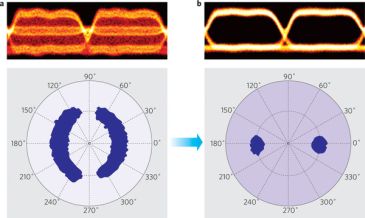
The research goal, open questions
Methods


Results
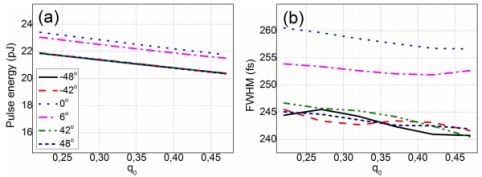

Expected impact and further research
Own publications, references, links
